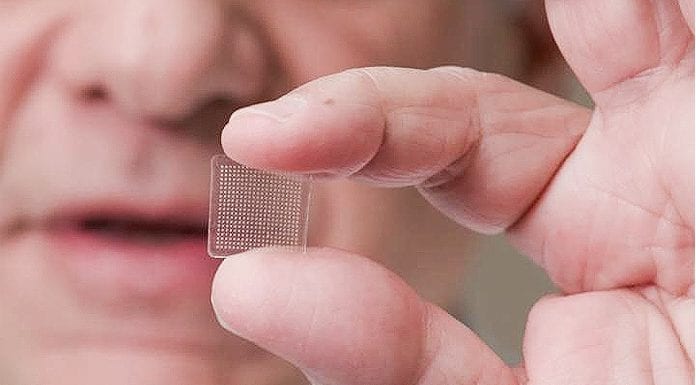
A new microneedle vaccine delivery system has been developed that has the potential to improve cellular immune responses in patients and expand global immunisation capabilities.
Researchers at the University of Pittsburgh School of Medicine, who are also working on a potential coronavirus vaccine, have developed a new microneedle delivery system for vaccines which uses live or attenuated viral vectors.
The delivery system is a finger-tip sized patch that contains 400 tiny needles, each just half of one millimetre.
The development was published in the Journal of Investigative Dermatology.
Microneedle delivery system
The skin is an ideal vaccination site because it contains an immune network that is highly responsive and encourages the generation of strong and long-lasting immunity.
The microneedle delivery system is made from sugar and the specific cargo being delivered, comprising a three-dimensional (3D), multicomponent dissolving microneedle array (MNA).
The vaccine would penetrate the upper level of the skin, absorb moisture from the skin, and then dissolve and release molecules that prompt the immune system to make antibodies to attack the virus.
In addition to antibody production, this technology has the potential to improve cellular immune responses in patients and expand global immunisation capabilities.
Lead author Dr Louis Falo Jr, Professor and Chairman of the Department of Dermatology, University of Pittsburgh School of Medicine and UPMC, said: “We are developing this new delivery technology because while traditional vaccines are often effective in inducing antibody responses, they frequently fail to generate the cellular responses that are essential to prevent or treat many cancers or infectious diseases.”
Dissolvable MNA’s
Dissolvable MNAs are designed to mechanically penetrate the superficial cutaneous layers, rapidly dissolve upon insertion into the skin, and deliver uniform quantities of biocargo to a defined 3D space within the skin. This enables localised delivery of low amounts of drugs or vaccines to achieve high concentrations in this specific skin microenvironment.
“Our results suggest that multicomponent MNA vaccine platforms uniquely enable delivery of both adjuvant and antigen-encoding viral vectors to the same skin microenvironment, resulting in improved immunogenicity including cellular immune responses,” comments Dr Falo.
“This MNA delivery approach could improve the effectiveness of adenoviral vaccines now in development for the prevention of coronavirus disease (COVID-19).”
























